The Devoted Collector: William H. Riggs and the Department of Arms and Armor
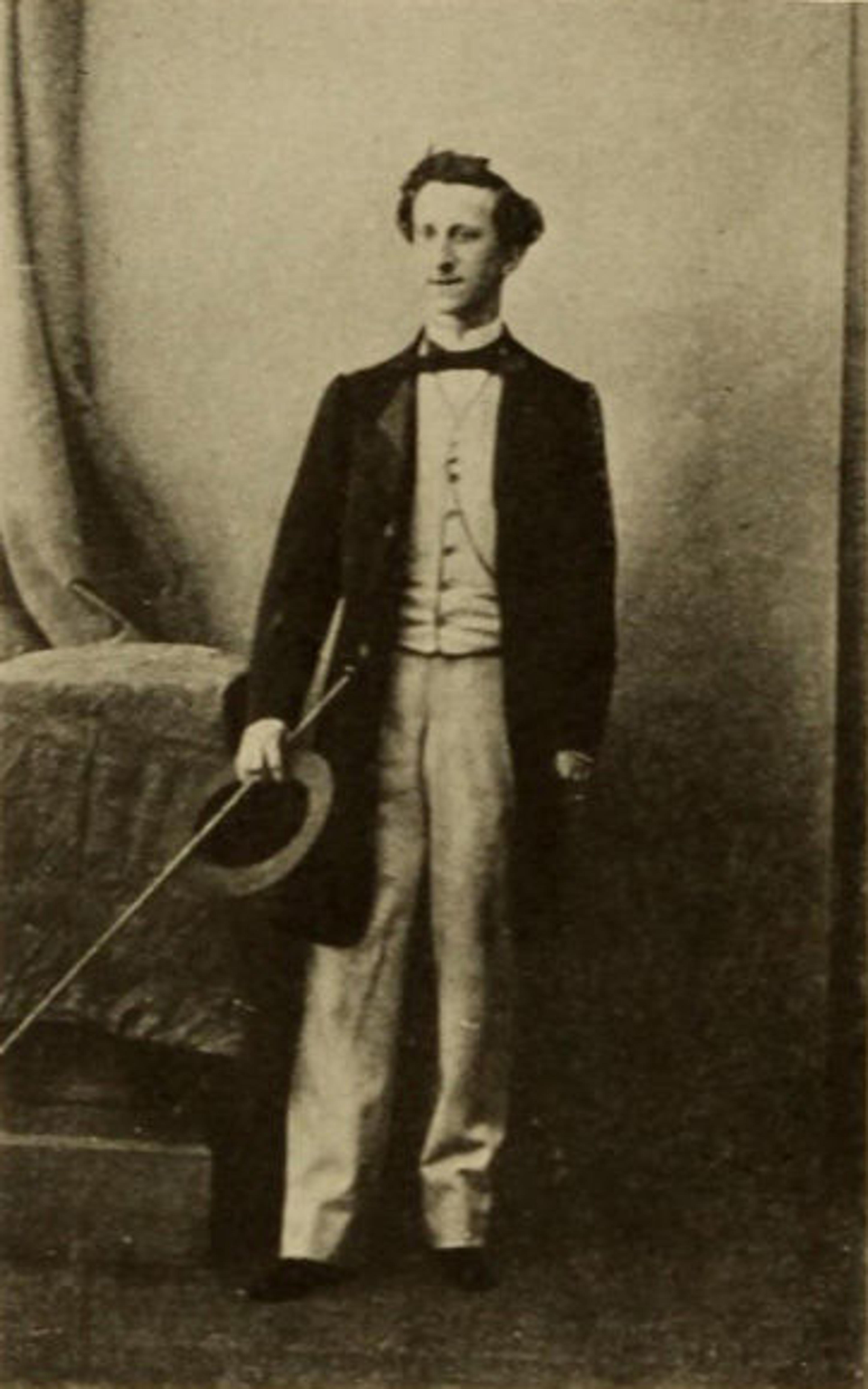
Portrait of William H. Riggs taken in Paris, about 1858. Printed in Bashford Dean, Notes on Arms and Armor (New York: The Metropolitan Museum of Art, 1916), 92.
«On Friday, May 9, 1913, the ship La France steamed into New York Harbor carrying William Henry Riggs, a wealthy American and lifelong collector of arms and armor. Riggs was returning from France to his native city for the first time in over forty years in order to donate his impressive collection to The Metropolitan Museum of Art. Accompanying Riggs was Bashford Dean, curator of the Metropolitan Museum's recently established Department of Arms and Armor and a well-known collector in his own right. Dean had spent close to a decade trying to persuade Riggs to give his collection to the Museum. Now, as a result of Dean's efforts, the Museum's new Arms and Armor department was set to acquire one of the greatest collections of its day.»
William Henry Riggs was born in 1837 in one of the mansions that faced the south side of Bowling Green in lower Manhattan. His father, Elisha Riggs, was a prominent merchant and banker. William showed an interest in history from a young age; as a boy, he assembled a collection of Native American arms and costumes, and he joined his father on the 1853 William F. Beale Expedition, which surveyed a route across Colorado and Utah to Los Angeles. Riggs initially planned to enroll in Columbia University, but upon his father's death in 1853, he decided instead to travel to Europe.

Portrait of William H. Riggs as he journeyed in Spain, 1857. Printed in Dean, 90.
Once there, William Riggs enrolled at the Sillig Institution in Vevey, Switzerland, an elite boarding school where he met the young J. P. Morgan, future president of the Metropolitan and a man who would later have a great influence on him. A studious pupil interested in mathematics, Morgan was said to have impressed his fellow classmates and teachers at the school by calculating cube roots in his head.1 The two Americans, who shared a passion for collecting, became instant friends. Together they made numerous trips to antique shops, where Riggs made some of his first arms purchases. He further honed his collecting skills after moving to Dresden to attend engineering courses.
Over the next few years, Riggs traveled widely throughout Europe, made acquaintances with nobles, dealers, and other collectors, and snapped up items as they came on the market. His enthusiasm and timing were rarely rivaled. Once over dinner, Riggs heard about a last-minute sale and traveled all night to preempt the competition. Yet Riggs did not acquire the pieces of his collection only through purchase. At times the friends he made over the course of his travels were more than willing to give him presents of their armor. Once, while traveling in Spain, Riggs was held up by the well-known bandit José Maria, who was so taken by the young collector that he not only let him go without a ransom, but gave him an old dagger as a gift.

Armor Gallery at The Metropolitan Museum of Art. Printed in Dean, 95.
In the late 1850s, Riggs settled in Paris, where he spent the next fifty years enlarging his collection to such an extent that his house could barely contain all the objects. In 1870, he moved to a larger mansion and converted the entire top floor into an armor gallery, but this did not alleviate the problem. Still, only a fraction of Riggs's collection was on display, while the bulk of it filled his closets and basement. Riggs was able to reduce the number of pieces of arms and armor in his collection by selling or exchanging less valuable objects in order to acquire more valuable specimens. His collection eventually came to contain about twenty-five hundred pieces.
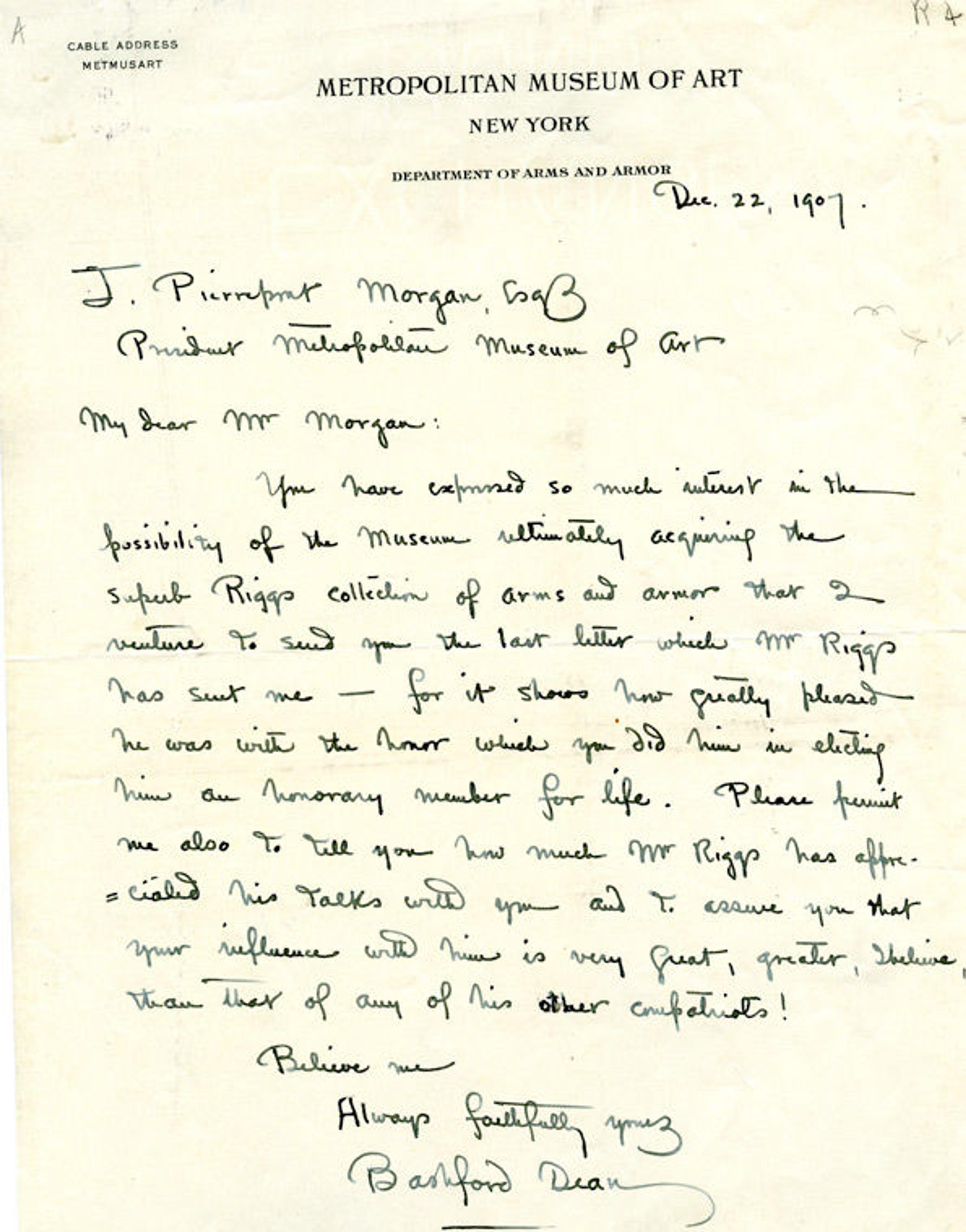
Letter from Bashford Dean to Museum President J. P. Morgan. Office of the Secretary Records, The Metropolitan Museum of Art Archives.
The Met had taken an interest in Riggs and his collection early on. On his previous trip to New York in 1868, Riggs mentioned to John Taylor Johnston—soon to become the first president of the Metropolitan—that he hoped to donate his collection to an American institution. With this in mind, the Museum's leaders elected Riggs a trustee and vice president in 1870, the year of the Museum's founding. However, Riggs continued to be noncommittal about the donation and resigned from his trusteeship in 1874. Riggs also considered giving his collection to the Smithsonian—President William Howard Taft supposedly offered to transport the gift to Washington in a warship—but Riggs was not convinced that the collection would be adequately housed. He decided against the donation.
Riggs's attention returned to the Metropolitan when, in 1904, his childhood friend J. P. Morgan was elected its president. That same year, the Museum purchased the Dino Collection, its first large acquisition of arms and armor. Lacking the necessary expertise to catalogue and organize the new acquisition, the Museum enlisted the services of zoologist and arms expert Bashford Dean. Dean, having recently met Riggs for the first time, described the collector as follows:
He was a man of sixty, clearly a scholar and a great personage—slightly built, shoulders stooping, nose aquiline, hands and feet surprisingly small, eyes clear and very bright. His face lighted up when he talked and he had charm of manner. … One could never forget his resonant voice which slurred no syllable, nor hurried, nor failed to choose a word which precisely "fitted."2
Dean's skill in organizing the Dino Collection persuaded Morgan to appoint him as the Museum's honorary curator of arms and armor, a collection which was then part of the Department of Decorative Arts. One of Dean's main tasks became the securing of the Riggs collection for the Metropolitan. In 1907, Riggs was elected an honorary fellow of the Museum, much to his apparent pleasure.
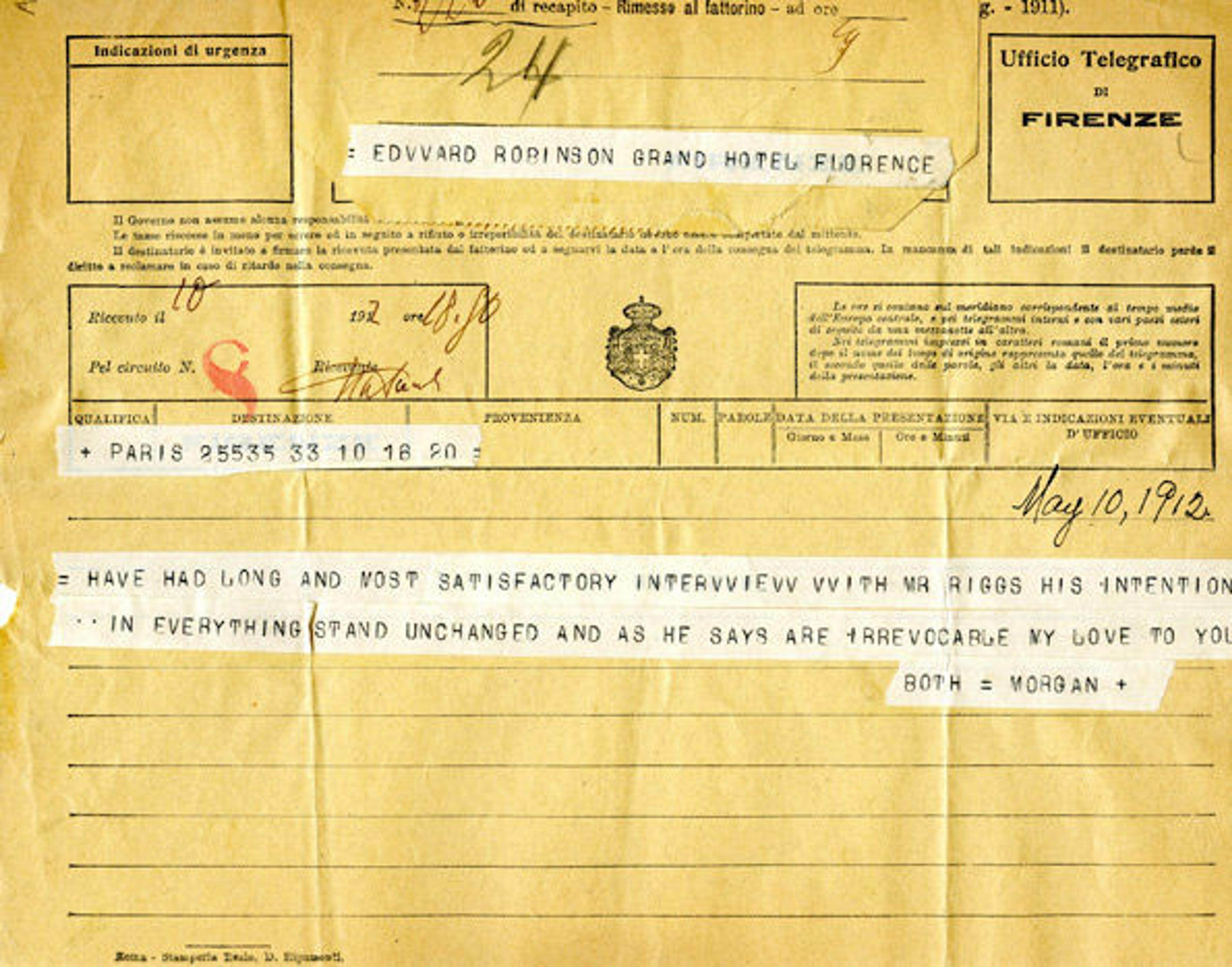
Telegram from Museum President J. P. Morgan to Director Edward Robinson. Office of the Secretary Records, The Metropolitan Museum of Art Archives.
Dean continued to court the expatriate collector even though Riggs remained vague about his intentions. In the spring of 1912, Morgan traveled to Paris to visit his old friend and successfully persuaded him to donate his collection to the Museum. Morgan sent a congratulatory telegram to the Metropolitan's director, Edward Robinson, informing him of his triumph.
However, new complications soon arose. At the time, Riggs was trying to sell a hotel property he possessed in Luchon, France. Preoccupied with its sale, he refused to address the issue of his collection until the hotel matter was resolved. To prompt Riggs to action, Morgan authorized Dean to buy the property for four hundred thousand francs, but the reluctant donor continued to stall.
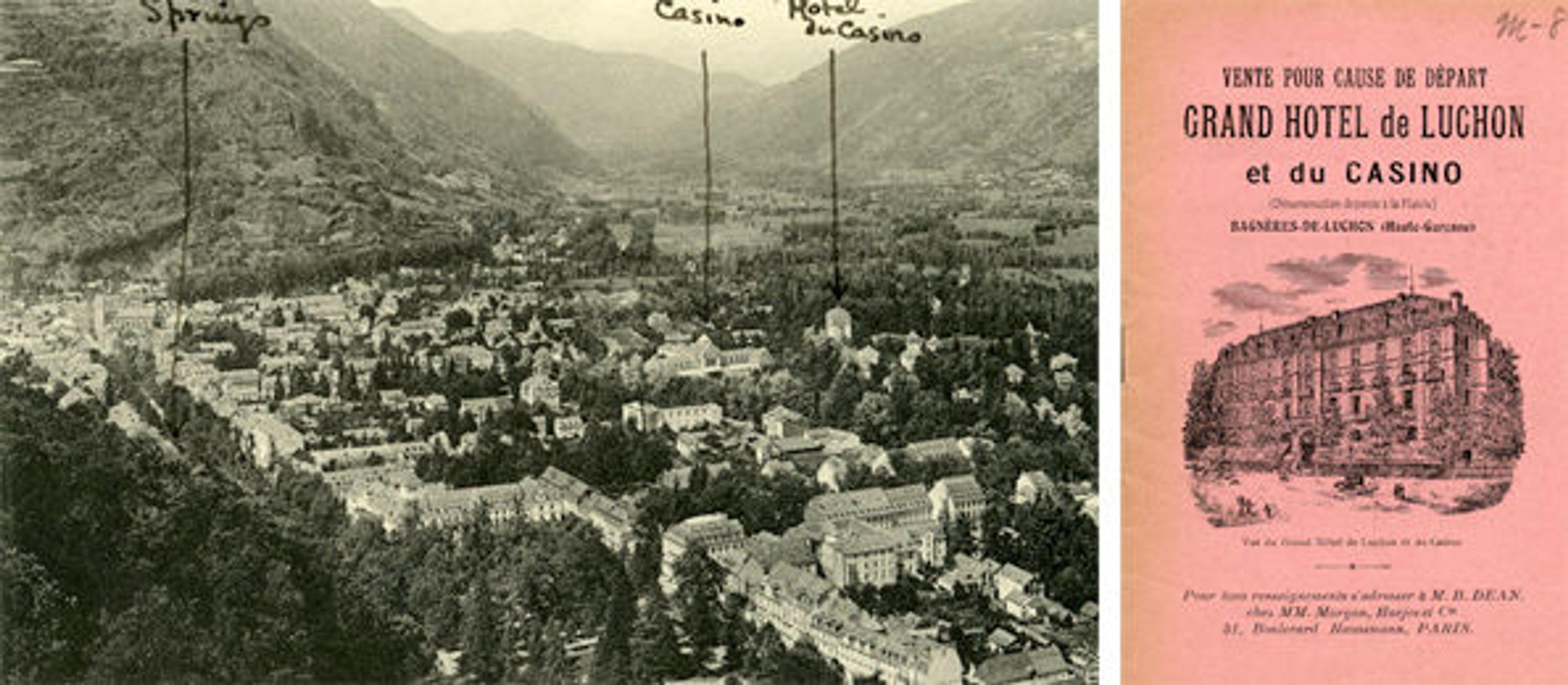
Left: Postcard of Luchon, France; Right: Front page of a brochure for the Riggs property in Luchon. Office of the Secretary Records, The Metropolitan Museum of Art Archives.
J. P. Morgan's death on March 31, 1913, finally moved Riggs to act. As Calvin Tomkins notes in Merchants and Masterpieces: The Story of the Metropolitan Museum of Art, "Morgan had given a splendid example of leaving his house in order, Riggs told Dean, and he himself must hasten to do the same."3 Just over a month after his schoolmate's death, Riggs sailed to New York, accompanied by Dean, to make his gift official. After inspecting the Museum and deciding that he was fully satisfied with the space his collection was to occupy, Riggs signed a deed of gift on June 13, 1913.
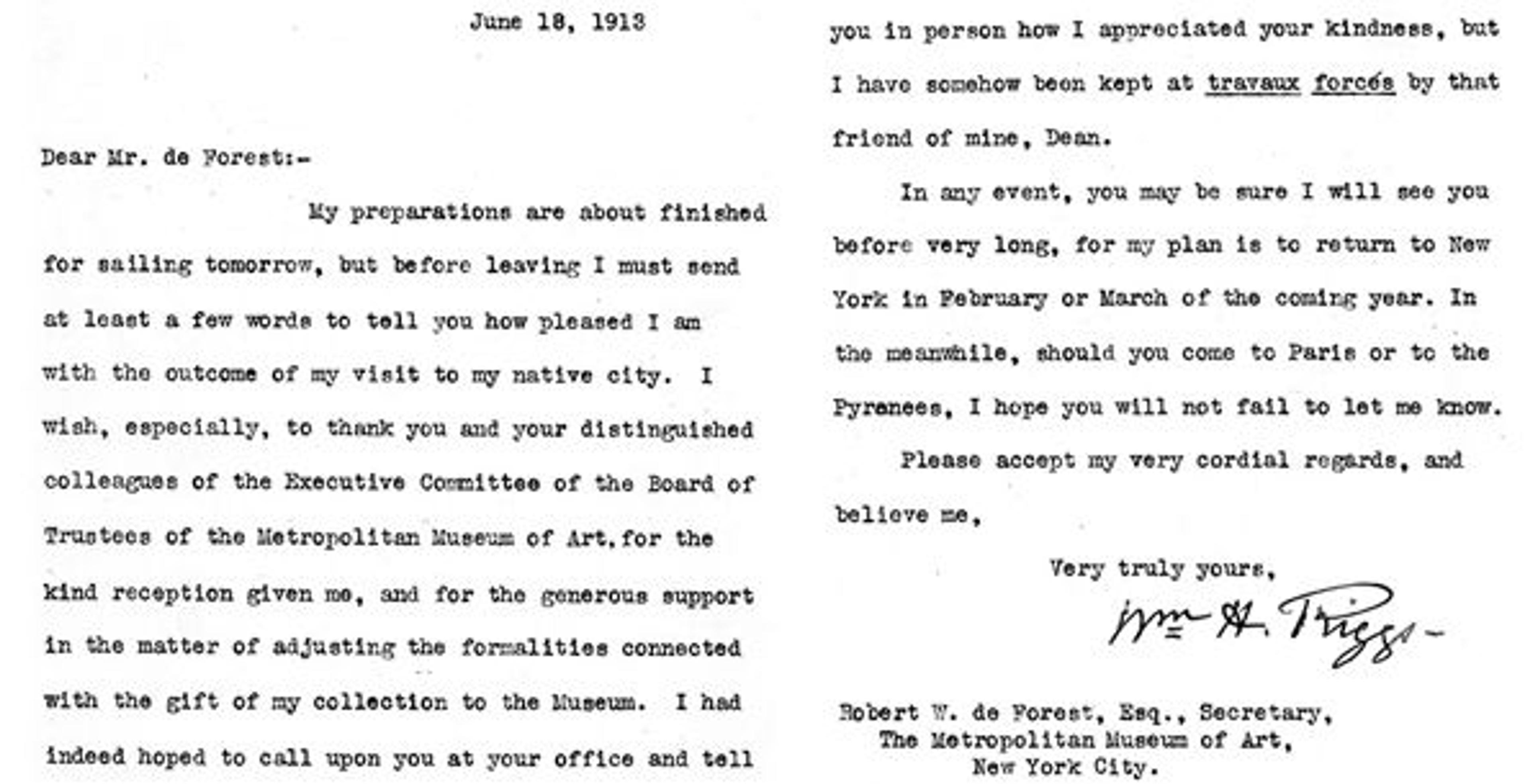
William H. Riggs letter to Museum Secretary Robert W. de Forest. Office of the Secretary Records, The Metropolitan Museum of Art Archives.
Dean spent the fall of 1913 helping Riggs to pack his large collection for transport and working on the new wing that would house the collection when it arrived at the Museum. In February 1914, the collection arrived on sixteen different ships, an event that commanded a great deal of publicity. News reports of the day estimated the collection to be worth millions of dollars, and it was among the most significant gifts to the Museum until that time.

Sketches in a letter from Curator Bashford Dean to Museum Director Edward Robinson. Office of the Secretary Records, The Metropolitan Museum of Art Archives.
Riggs continued to donate objects to the Museum until his death on August 31, 1924, at the age of 87. Dean died only four years later, with much of his collection ending up at the Metropolitan as well. Today, important pieces from Riggs's and Dean's collections appear side by side in the galleries of the Department of Arms and Armor.
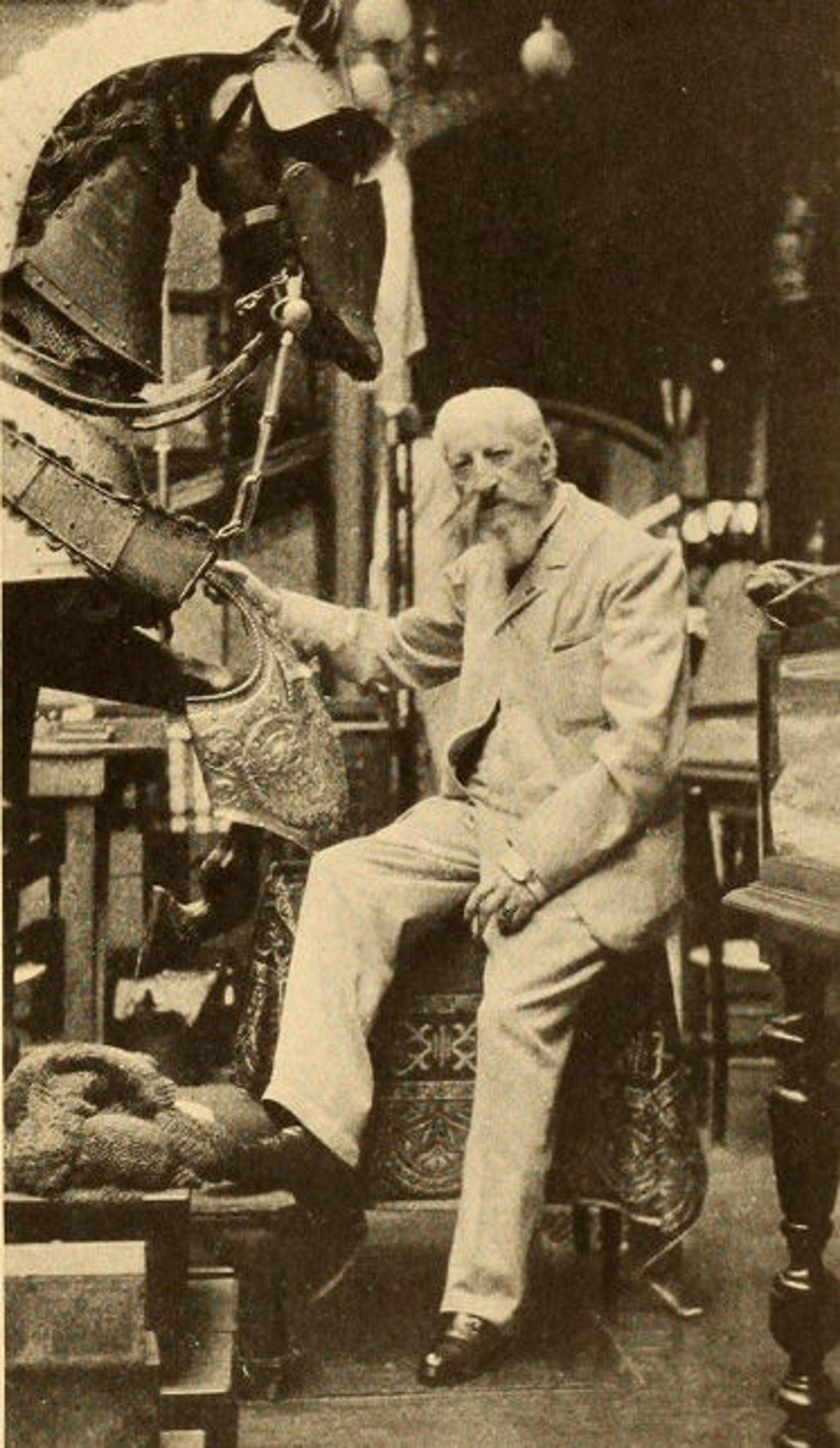
Portrait of William H. Riggs in his armory in the Rue Murillo, 1913. Printed in Dean, 87.
Footnotes
[1] Bashford Dean, Notes on Arms and Armor (New York: The Metropolitan Museum of Art, 1916), 86. The full text is available in the Metropolitan Museum's Watson Library Digital Collections.
[2] Calvin Tomkins, Merchants and Masterpieces: The Story of the Metropolitan Museum of Art (New York: Henry Holt and Company, 1989), 157.
[3] Tomkins, 162.
Aleksandr Gelfand
Aleksandr Gelfand was formerly an intern in the Museum Archives.